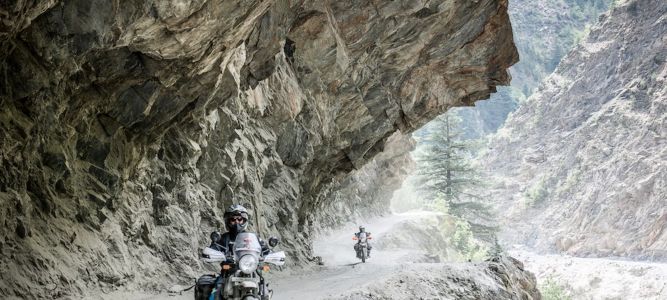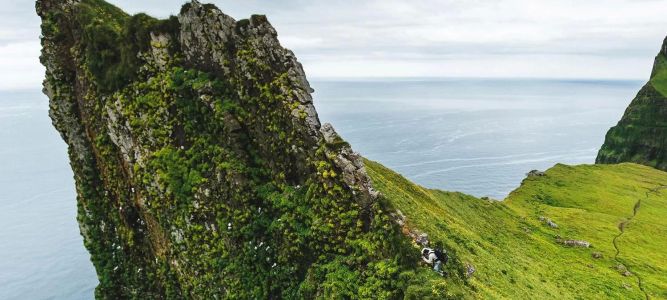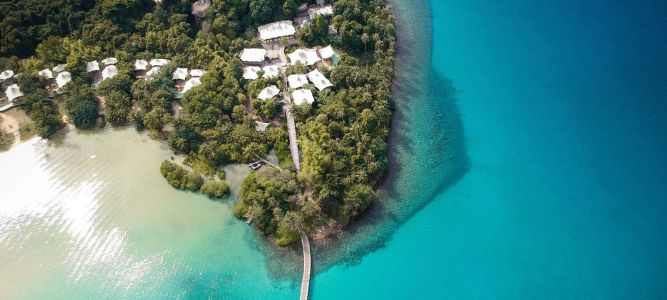1. Why Explore Remote Destinations?
Exploring the world’s most remote destinations is not just about escaping the crowds—it's about experiencing the planet in its purest form. Whether you're visiting the uninhabited beaches of the South Pacific or trekking through dense, untouched jungles in the Amazon, remote destinations offer unparalleled experiences. These places often remain untouched by mass tourism, which makes them a dream for those seeking authenticity and adventure.The appeal of remote travel also lies in its challenges. When you visit less accessible locations, you’re often faced with unique obstacles that make the journey even more rewarding. From navigating harsh weather conditions to interacting with indigenous cultures, every remote trip offers new opportunities for personal growth and unforgettable memories.2. Top Remote Destinations to Visit
There are countless remote destinations that offer both adventure and serenity. Here are some of the best remote places in the world to explore: - Antarctica: The most remote continent on Earth, Antarctica offers unparalleled landscapes and wildlife. You can embark on a guided expedition to see penguins, seals, and massive icebergs, or even cross the Antarctic Circle for a true off-the-grid experience. - Pitcairn Islands: Located in the South Pacific, the Pitcairn Islands are known for their isolation and stunning natural beauty. With only around 50 residents, the islands provide an escape into a world where nature and culture intersect harmoniously. - Bhutan: Nestled in the Himalayas, Bhutan is a country that has carefully maintained its tradition and culture, while limiting tourism to preserve its environment. Trekking through its valleys, exploring monasteries, and engaging with locals make Bhutan one of the most unique remote destinations. - The Amazon Rainforest: For nature enthusiasts and adventure travelers, the Amazon offers some of the most remote experiences on Earth. The dense jungle is home to exotic wildlife and indigenous communities who live off the land in ways that haven’t changed for centuries.3. How to Prepare for Remote Travel
Traveling to remote destinations requires more preparation than traditional travel. Here’s how to make sure you're ready for the journey: - Research Your Destination: Understanding the geography, culture, and possible health risks of your remote destination is essential. Many of these places have limited infrastructure, so it's crucial to know what to expect. - Pack Smart and Light: Remote destinations often require a lot of physical exertion, so packing light is important. Choose multifunctional gear and clothing that are durable and versatile, like hiking boots, layered clothing, and a high-quality backpack. - Know the Travel Logistics: Depending on where you’re going, getting to remote destinations can be tricky. Make sure you’re aware of how to reach your destination, whether by boat, plane, or hiking. Some locations may require special permits or vaccinations. - Physical Preparation: Many remote destinations involve rugged terrain or physically demanding activities. Train your body in advance, whether it's through endurance hikes, swimming, or strength training, to ensure you're physically prepared for the challenges ahead.4. What to Expect When Traveling to Remote Destinations
Expect the unexpected when traveling to remote destinations. These places often have limited access to modern conveniences, so it’s important to embrace the adventure and the sense of isolation. - Limited Communication: Many remote destinations lack reliable internet or phone service. This can be refreshing for some, but it’s important to inform friends and family about your plans and emergency contact methods before leaving. - Unique Encounters: Remote destinations often offer a chance to connect with nature in ways that aren’t possible in more tourist-heavy locations. Whether it’s interacting with wildlife, navigating through dense forests, or learning from indigenous communities, these experiences create lasting memories. - Hardship and Reward: Traveling to remote locations often requires overcoming physical or mental challenges. You might face long travel days, harsh weather, or limited amenities, but the reward is worth it: a truly unforgettable adventure in some of the world’s most beautiful and untouched spots.5. Planning Your Remote Adventure
Planning a trip to a remote destination requires careful research and flexibility. Start by consulting travel experts or tour companies that specialize in remote areas. Many of these companies offer guided tours or logistical support to make your experience smoother and more enjoyable. Additionally, consider booking accommodations in advance. While some remote destinations offer camping or basic lodges, others may have limited capacity. You should also check if permits or other legal documentation are needed for your journey. A successful remote adventure is about more than just reaching the destination; it’s about immersing yourself in the experience and embracing the unexpected. If you're ready to explore the world’s most remote places, make sure you’re well-prepared, and remember: the journey itself is just as important as the destination.Ready to embark on your own remote adventure? Visit Travelers Odessa to discover more about exploring remote destinations and planning your dream trip!





